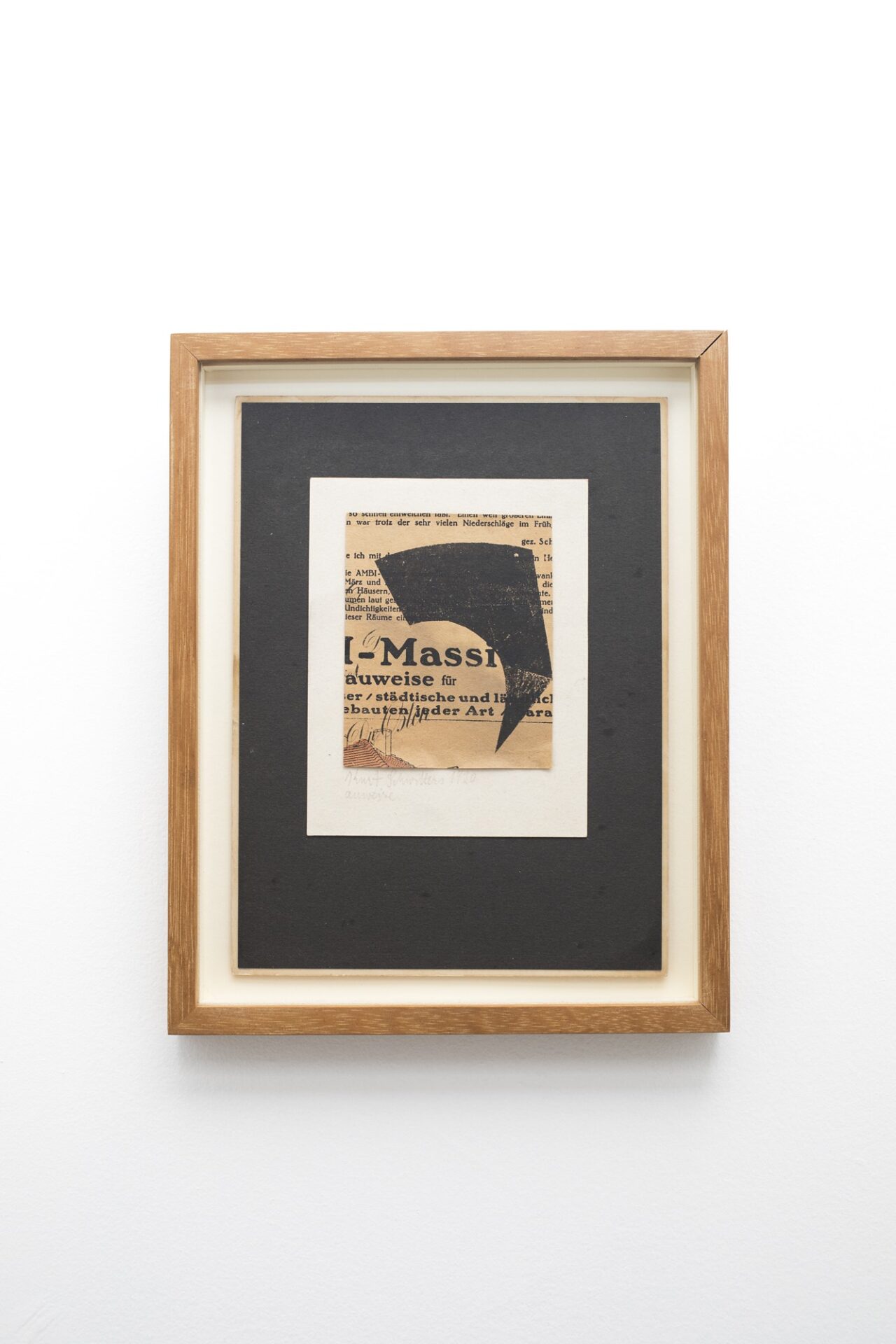Kurt Schwitters was born in Hannover, Germany. He worked across a number of movements, among them constructivism and surrealism, but his art is most commonly associated with Dada. He made work in a variety of media, including painting, poetry, installation art, sculpture, graphic design, typography, and collage, as in Auweise, 1920, installed by Donald Judd at 101 Spring Street.
Schwitters invented the term Merz to describe his work in collage and assemblage using found materials. The word itself is “found,” borrowed from a cutout of a piece of paper on which was printed the name Commerz Bank. The title of this collage is likewise written in the work itself, on a scrap of paper that might have been inscribed with the German word bauweise, translating to “method of construction.”
On the impact of World War I on his work, Schwitter’s noted: “In the war, things were in terrible turmoil. What I had learned at the academy was of no use to me and the useful new ideas were still unready. . . . everything had broken down in any case and new things had to be made out of the fragments: and this is Merz. It was like an image of the revolution within me, not as it was, but as it should have been.”1
